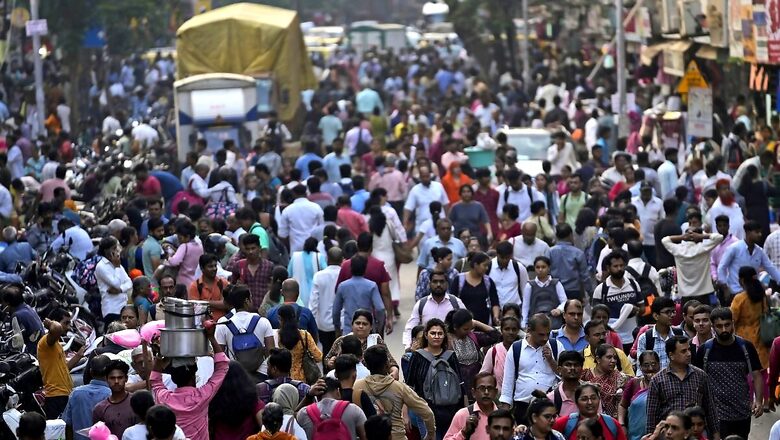
views
India is on its way to becoming the most populous country in the world with a population of 1.428 billion, almost three million more people than China, a UN report released on Wednesday showed.
The United Nations Population Fund’s State of World Population report showed India’s population to be 1.428 billion compared to China’s 1.425 billion at mid-year. The population data, quoted by the UN, was the estimated size of national populations at mid-year, it said.
While the fertility rate in India stands at 2.0, China’s fertility rate was 1.2. It is for the first time that India’s population has overtaken China’s since 1950 when the UN began to collect and release population data.
While China has an ageing population with stagnant growth, India has a much younger population, a higher fertility rate and a decrease in infant mortality over the last three decades.
The report stated that 25% of the people in India are in the 0-14 age category, 18% were in the 10-19 age category, 26% in the 10-24 age category, 68% in the 15-64 age category and 7% are aged 65 years or older.

The corresponding figures for China are 17%, 12%, 18%, 69% and 14%, which means the country has nearly 200 million above 65 years of age.
While India and China are the first two spots, the United States is at a distant third, with an estimated population of 340 million, the report said.
Estimates by different agencies have suggested that India’s population is expected to keep rising for nearly three decades before it peaks at 165 crore and then starts declining. Kerala and Punjab have an ageing population while Bihar and Uttar Pradesh have a young population, experts have said.
India has no recent official data on how many people it has because it has not conducted a census since 2011. India’s census, scheduled for 2021, was delayed due to the coronavirus pandemic.
According to the Pew Research Centre, India’s population has grown by more than one billion people since 1950, the year the UN began gathering population data.
China’s Shrinking Population
China’s population shrank last year for the first time since 1960, when millions starved to death under the disastrous agricultural policies of former leader Mao Zedong, according to AFP.
Many have blamed the slowdown on the soaring cost of living as well as the growing number of women going into the workforce and seeking higher education.
Beijing ended its strict “one-child policy”, imposed in the 1980s amid overpopulation fears, in 2016 and started letting couples have three children in 2021.
China faces a looming demographic decline as birth rates plunge and its workforce ages. Several regions have also announced plans to boost birth rates –- but official efforts have so far failed to reverse the decline.
The new UN report also estimated that the global population will have hit 8.045 billion by mid-2023.
Other countries, mostly in Europe and Asia, can expect a demographic slump over the coming decades, according to other UN figures published last July which forecast how the world’s population will develop between now and 2100.
(With inputs from Shailendra Wangu)
Read all the Latest India News here



















Comments
0 comment